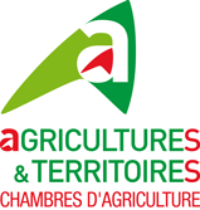Document type: study report from FranceAgriMer
Authors: Burkhard Schaer, Maurine Mamès, Michael Böhm, Elsa Trottet, Valentina Wiggert, Paul Hoschek, Johann Groß, Jürgen Hansen
Preview: Introduction: Project objectives and structure
Animal welfare can cause controversy in public debate, and is sufficiently contentious for the livestock sectors to find themselves having to question their current technical and economic models along with their plans for the future.
Against this backdrop, France Agri Mer commissioned an investigation by Ecozept of production costs in the pork and broiler sectors associated with animal welfare guidelines, looking at ways to improve their profitability. The project's operational purpose was to take stock of existing animal welfare approaches in the pork and broiler poultry sectors in Northern Europe (Netherlands, Denmark and Germany), and to answer the following two questions:
- What are the additional production costs associated with each of the various animal welfare approaches, and what are the main factors influencing these additional costs?
- What is the added market value of products derived from animal welfare initiatives, and what are the different ways of creating additional value? [...]
Conclusion
This project has enabled us to identify the factors that contribute to additional costs, what can be done to improve profitability, and possible routes for animal welfare initiatives. This comparative study also provides a basis for recommendations concerning the implementation of new animal welfare approaches.
We find that the first step, that from "standard level" to "first level animal welfare" (called Level 1 or Level 2 depending on the country) is the most critical. Reaching this first level generates additional costs while permitting only a small increase in market value (if any at all).
Attaining Levels 2 and 3 (or 4) is often more profitable. But, generally speaking, the measures required for these levels will only be implemented by farms that lend themselves to them because of their layout (available space, contiguous parcels of land, etc.), limiting any rise in numbers. Even where the conditions for adding value are favourable, farm profitability will depend strongly on the investment costs involved (buildings, surface area).
In the countries studied, supermarkets have pushed producers to implement higher levels of animal welfare by operating systems involving contracts that offer premiums and guaranteed prices. These remuneration models increase acceptability to farmers. In this context, we can also point to innovative models, such as the arbitration of prices and premiums by a third party (a public institution or research organization) or the calculation of mixed costs across the different levels of animal welfare.
Extending animal welfare-based production therefore depends on an assessment of conditions on the farms concerned and a coherent marketing plan. Modifications to farm buildings are a major obstacle. Renovations and, above all, any new construction, are hampered by costs and the hurdle of planning permission. Indeed, in all the countries studied, building permits are very difficult to obtain for livestock projects.
When implementing new animal welfare approaches (or developing existing ones), it is advisable to draw up an inventory of farms that, by virtue of their existing configuration, are suited to this approach, and to concentrate efforts on these. Other obstacles to the expansion of animal welfare-friendly production can be overcome more easily.
For example, the lack of information and the preconceptions that persist in the farming world can be overcome by more proactive communication on the part of government departments and professional unions. A dossier of good practices in animal welfare-friendly livestock farming, widely distributed to all those in the sector, could help reduce work overloads and increase profitability.
Last, the challenge of training farm personnel must be embarked on: the current workforce, whether permanent or temporary, has not been trained to assist in the running of livestock farms that meet high animal welfare standards. Provision of additional training programs in this area would appear to be essential if we are to facilitate the conversion of farms to more animal-welfare-friendly practices.
Overall, the results of the study show that animal welfare offers a useful route for the livestock sector, leading towards greater profitability and greater acceptance by civil society, provided that the various links in the production chain cooperate closely and over the long term.
Report leading to an article in Filières avicoles on June 19, 2023: Bien-être animal : combien ça coûte ?






